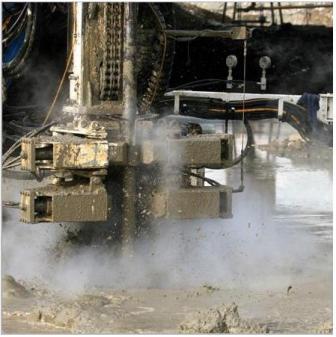
Jet Grounting
The Jet-Grouting techniques have been developed for soil consolidation and waterproofing.
Advantages:
- capability to obtain columns of consolidated soil with diameter ranging from 60 to more than 300 cm by using small diameter drilled holes, in general not larger than 180200 mm
- capability to overpass pre-existing foundations, boulders, rocky layers
- use of light weight and small-sized drill rigs in small working areas.
Applications:
- underpinning
- diaphragm walls
- tunnel consolidations
- bottom plugs
- slopes consolidations
- dam cut-offs
- diaphragm wall gaps
- break-in and break-out for TBM
Techniques:
The Jet-grouting techniques are classified depending on the number of fluids injected during treatment:
- Mono-fluid system: cement grout is used as breaking-up and consolidation agent (TREVIJET T1)
- Bi-fluid system: cement grout and air are used as breaking-up and consolidation agent (TREVIJET T1/S)
- Triple-fluid system: water and air are used as breaking-up agents, while the cement grout is used as consolidation agent (TREVIJET T2)
All Jet-Grouting techniques include a drilling phase followed by withdrawal and rotation at preset values, with simultaneous injection of fluids at high pressure.
The nominal values are referred to 100% total efficiency.
